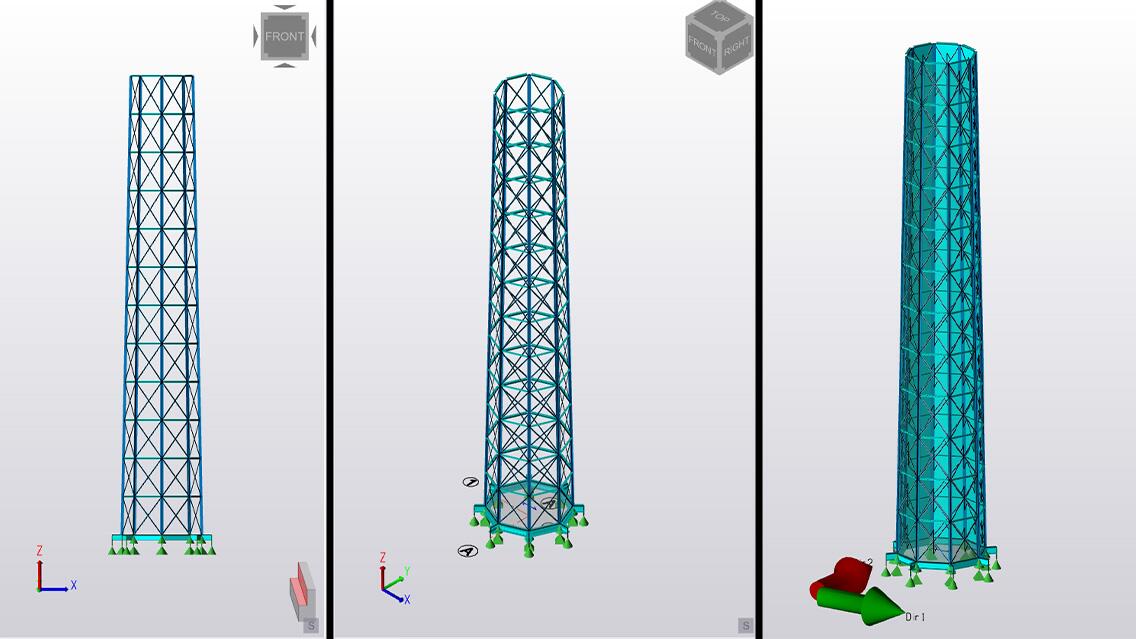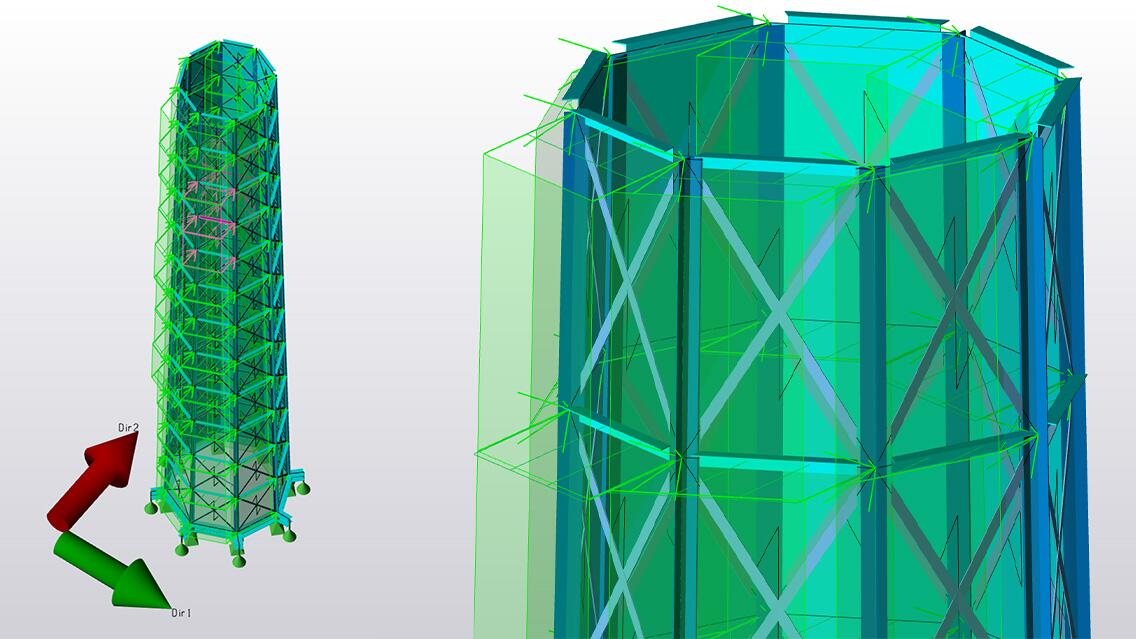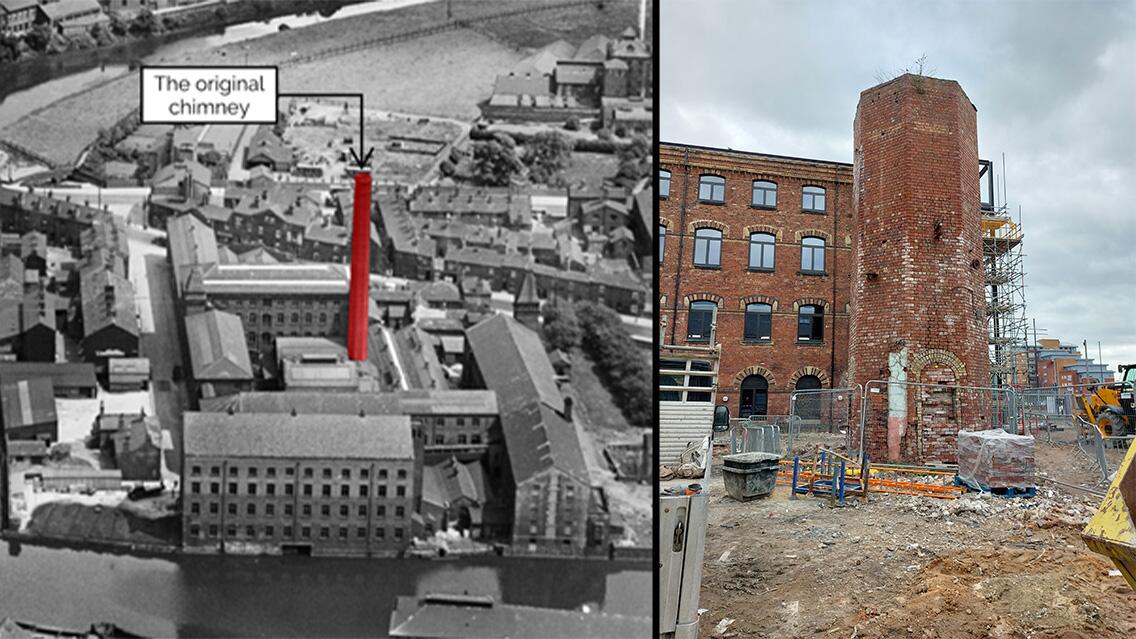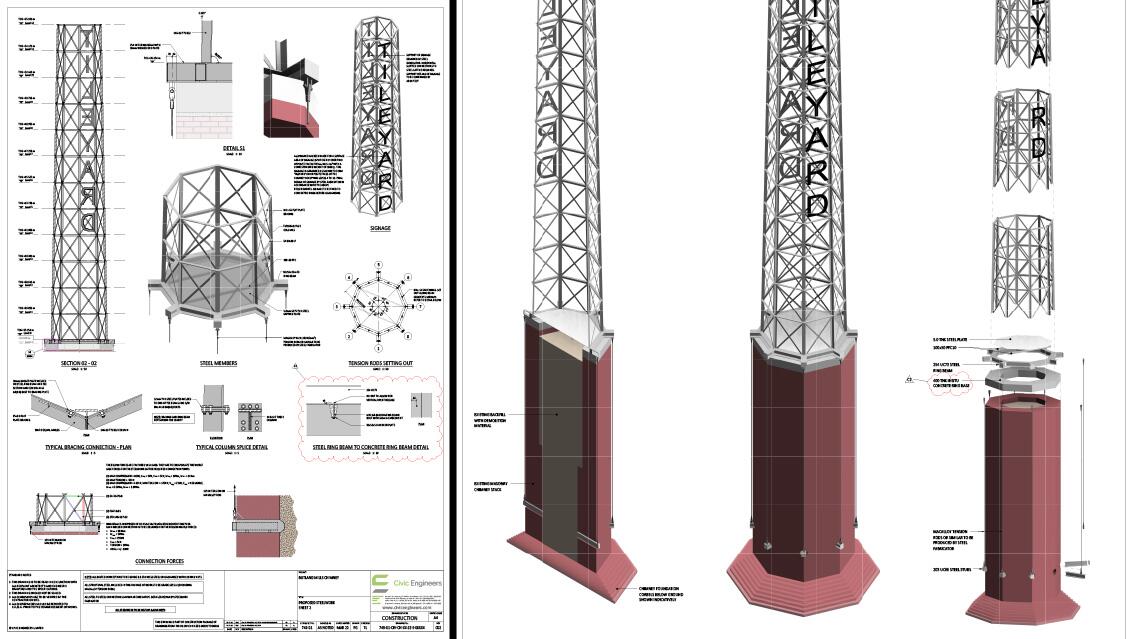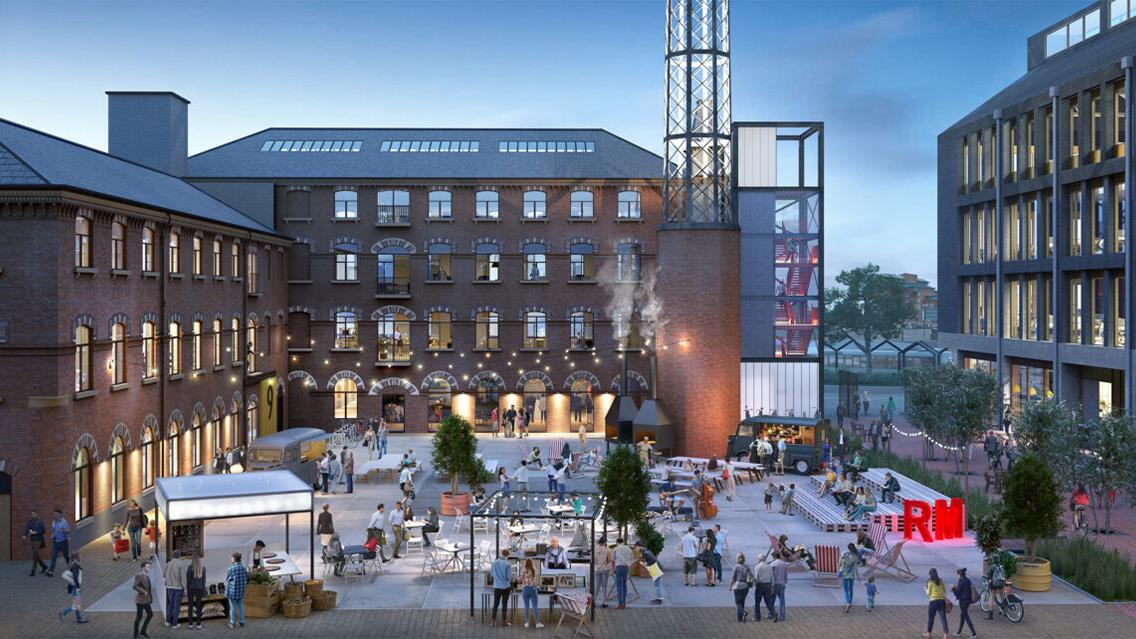Rutland Mills was a cotton mill operating in the 19th and 20th centuries. Over this time a central engine building featuring an imposing 35m tall chimney powered the machines of the complex. The complex remained mostly abandoned since the 1970s, gradually decaying until 2016 when work commenced to regenerate the site to create a mixed-use cultural destination in Wakefield.
The scheme will focuses on a public realm plaza on the site of the original engine building. During the 1980s, the chimney of the engine building was truncated down to a third of its original height. Hawkins\Brown Architects have proposed re-building the chimney’s silhouette back to its original height in a steel work lattice sat atop the remaining masonry stack. This sculpture will give a focal gathering point to the complex, referring back to Rutland Mills industrial past. It is scheduled for completion by the end of August 2022.
Converting a 2500kNm overturning moment into compression-only reactions
The primary load path of the structure transfers horizontal wind forces from the lattice down to the ground. These wind forces generate overturning moments that are resolved into the masonry of the existing stack via a push-pull arrangement of reactions at the base of the lattice. This presented a clear challenge, since applying an upward load directly to the top of the masonry stack would lead to tension in the masonry causing failure of the steel/masonry interface. To prevent this, we used the own weight of the masonry to counteract the upwards reactions from the lattice.
A steel ‘wagon wheel’ with spokes protruding beyond the extents of the masonry stack connects to 8 Macalloy tension rods that link to embedded ‘spigots’ 10m below the crest of the stack. These anchors are engaged when an upwards reaction is restrained by one of the Macalloy rods. This results in the weight of the masonry being mobilised against the upwards load preventing any net tension developing in the masonry. On the opposite site of the stack, the overturning downwards forces are transferred via compression from the steel wagon wheel to an in-situ concrete ring beam atop the stack. A vertical upwards release between the steel and concrete ring beams ensures that no tension is transferred between the two elements, only compression. The combination of these two mechanisms converts an overturning moment of more than 2500kNm into pure compression at the points of application to the masonry.
Optmising Steel Work Tonnage with Tekla Structural Designer
Tekla Structural Designer was used to model the global deflection and distribution of forces for the chimney. The support stiffness was varied to test the sensitivity of selecting different diameter and length tension rods. This meant 40% steel work tonnage was saved through Tekla - Grasshopper genetic optimisation algorithms.
The second key challenge we managed to overcome through the use of Tekla Structural Designer was the requirement to optimise steel work tonnages within the design of the lattice tower. The introduction of TSDs grasshopper live link allowed Civic Engineers computational engineering team to use the genetic optimisation algorithms in-built with Rhinoceros 7 (McNeel Associates) on the TSD analytical capabilities. The gif included in this submission shows the optimisation algorithm working with TSD to run through hundreds of iterations of variables that define the geometry of the lattice tower. Through this process Civic Engineers were able to reduce the steel work tonnage of the lattice by 40% from the initial scheme design at planning.
In summary, with Tekla Structural Designer we were able to:
- Create over 5000 iterations of a Tekla/Grasshopper genetic optimisation algorithm
- Resolve 2500kNm overturning moment on a lightweight structure entirely into compression
- Save 40% reduction in steel work tonnage
- Create a 35m tall sculpture
- Use multiple softwares seamlessly: Tekla Structural Designer was controlled via a Grasshopper script that input into multiple softwares for the A&D and Analysis tasks
- Investigate, very quickly, the impact on natural frequency and global deflection to identify the implication of changing various member types section sizes. It also allowed 3D real time coordination to be examined during design team meetings
- Understand very easily the modelling interface, because it's so intuitive, allowing Civic Engineers to easily communicate the implications of design choices on the structure to the wider design team
- Apply a powerful analysis tool to the parametric capabilities of Grasshopper, giving us rapid optioneering and optimisation using an analysis package that is much more developed and reliable than similar packages available in a parametric modelling environment
